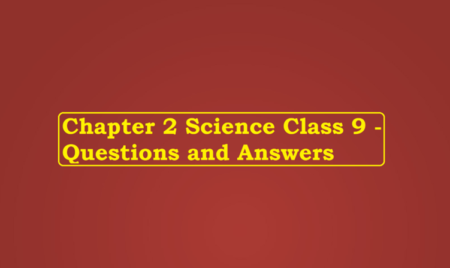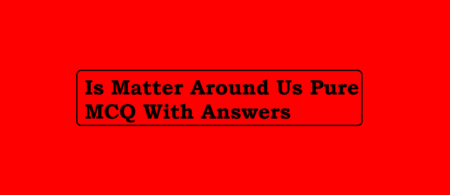Is Matter Around Us Pure Questions (Practice)
Que 1. Define diffusion with an example.
Que 2. How many states of matter are there?
Que 3. Give reasons for the following observation: The smell of hot sizzling food reaches you several metres away, but to get the smell of cold food, you have to go close.
Que 4. Comment on the following statements:
(a) Evaporation causes cooling.
(b) Rate of evaporation of an aqueous solution decreases with an increase in humidity.
(c) Sponge though compressible is solid.
(d) Ice is solid at 0°C, while water is liquid at room temperature.
(e) Sugar crystals dissolve faster in hot water than in cold water.
Que 5. What are distillation and fractional distillation? What is the basic property that separates the two methods?
Que 6. Liquids and gases can be compressed but it is difficult to compress solids. Why?
Que 7. Liquids generally have lower density as compared to solids. But you must have observed that ice floats on water. Find out why?
Que 8. A sample of water under study was found to boil at 102 °C at normal temperature and pressure. Is the water pure? Will this water freeze at 0 °C? Comment.
Que 9. How can you show that one crystal of potassium permanganate contains millions of tiny particles?
Que 10. Why do we feel pleasant sitting under a tree on a hot sunny day?
Que 11. Arrange the rate of diffusion in the following substance
(a) Alcohol (b) Ammonia (c) Solid NaCl
Que 12. The rate of diffusion depends on the?
Que 13. Why is the rate of diffusion maximum in gas in comparison to sold & liquid?
Is Matter Around Us Pure Questions
Que 14. The state in which molecular attractions are less
(A) Solid
(B) Liquid
(C) Gas
(D) None of these
Que 15. Which form of water is highly compressible?
(A) Solid
(B) Liquid
(C) Gas
(D) Colloidal
Que 16. Graham’s law of diffusion gives better results at
(A) High pressure
(B) High temperature
(C) Low pressure
(D) High temperature
Que 17. Graham’s law deals with the relationship between
(A) Pressure and volume
(B) Density and rate of diffusion
(C) Rate of diffusion and volume
(D) Rate of diffusion and viscosity
Que 18. Vapours of a liquid exist only
(A) Below the boiling point
(B) Below the critical temperature
(C) Below inversion temperature
(D) Above the critical temperature
Que 19. The conversion of solid to gas is called
(A) Vapourisation
(B) Condensation
(C) Liquefaction
(D) Sublimation
Que 20. The conversion that takes place at room temperature is
(A) Boiling
(B) Evaporation
(C) Melting
(D) Freezing
Que 21. Which of the following will respond to sublimation?
(A) Sugar
(B) Zinc Chloride
(C) Copper Sulphate
(D) None of these
Que 22. Which of the following is not a matter?
(A) Air
(B) Feeling of cold
(C) Dust
(D) Humidity
Que 23. When a mixture is boiled for separating into its constituents, the constituent which is separated last has
(A) Lower boiling point
(B) Higher boiling point
(C) Can have a lower or higher boiling point
(D) Medium boiling point
Que 24. The kinetic energy of the particles of a given substance will be least in
(A) Solid state
(B) Liquid state
(C) Gaseous state
(D) Cannot say
Que 25. To separate a mixture of kerosene and petrol the method that can be used is
(A) Distillation
(B) Fractional distillation
(C) Boiling
(D) filtration
Que 26. Which of the following will respond to sublimation?
(A) Common salt
(B) Sugar
(C) Camphor
(D) Potassium nitrate
Que 27. The correct order of evaporation of water, alcohol, petrol and kerosene is
(A) water > alcohol>kerosene>petrol
(B) alcohol > petrol>water>kerosene
(C) petrol>alcohol>water> kerosene
(D) petrol>alcohol>kerosene>water
Que 28. Which is correct for the evaporation of liquid (when no heat is given from outside)
(A) The temperature of the liquid remains unchanged
(B) The temperature of the liquid rises
(C) The temperature of the liquid falls
(D) All statements are wrong
Que 29. Solid cannot be compressed because
(A) Constituent particles are very closely packed
(B) Interparticle attractive forces are weak
(C) Movement of constituent particles is restricted
(D) Constituent particles diffuse very slowly
Que 30. Which is true for dry ice?
(A) Solid ammonia
(B) Solid carbon dioxide
(C) Solid sulphur dioxide
(D) Normal ice
Is Matter Around Us Pure Questions



